
Emerging capital of terrorism?
The Tulkarm district has not traditionally been one of the most challenging and hostile districts in Judea and Samaria. From among the territories administered by the Palestinian Authority, it is areas such as Jenin and Nablus that have, over the years, been seen as a hotbed of nationalist extremism that continually breeds terrorist groups and orchestrates attacks. For years, the security services have actively responded to intelligence alerts, targeting terrorist groups and preventing attacks throughout Judea and Samaria.
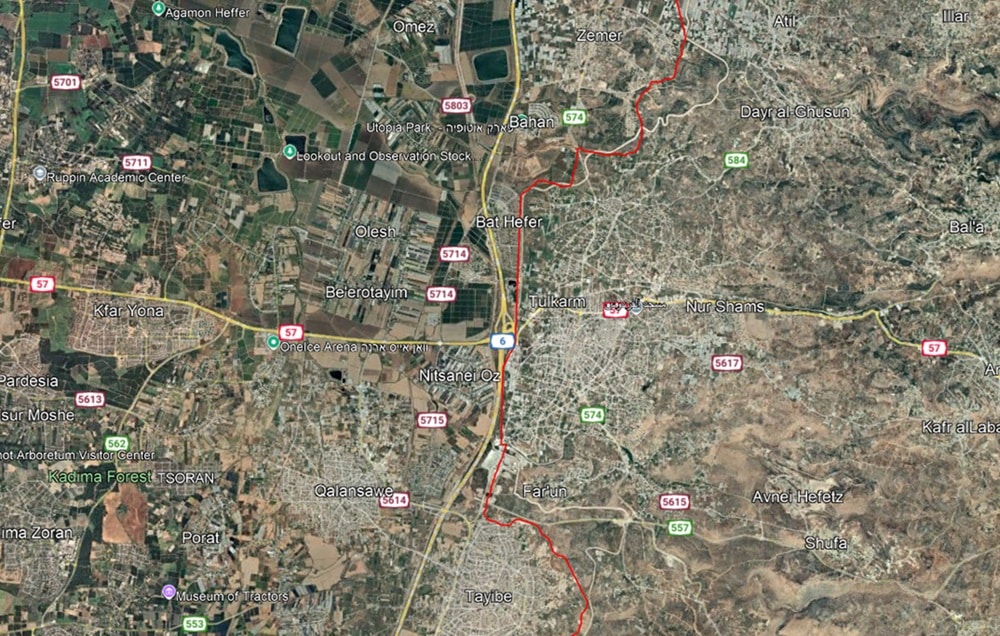
Examples include Operation Defensive Shield, the lengthy Operation Breakwater, and thousands of arrests over the past decade alone. In the specific period since October 7, 2023, more than 4,000 terrorists were arrested throughout the Judea and Samaria area by the IDF, the ISA, and special police units. Of those terrorists, 314 lived in or near Tulkarm.
The city of Tulkarm and its surrounding area, including the refugee camps and Nur Shams, made headlines recently because of videos on Telegram in which armed and masked young Palestinians documented themselves shooting across the Green Line at Hefer Valley communities and threatening Israeli citizens. Throughout the months of the War of Iron Swords, operational activity in and around Tulkarm intensified to a challenging level, demanding significant resources and heightened focus from the security services.
Nearly every week of the war, reports emerged of arrests in Tulkarm. The area became a launchpad for terror attacks, the formation of cells, and even airstrikes by the IDF targeting terror squads. From among 600 terrorists eliminated in Judea and Samaria since the start of the war, 125 were eliminated in and around Tulkarm — a weighty percentage. [1]
How did the Tulkarm district gain prominence, and how is Israel responding?
Operation Summer Camps, August 2024: An unprecedented and extensive operation in Tulkarm
On October 27, 2024, an extensive operation began in the north of the Judea and Samaria area, focusing on Jenin, Tulkarm, and the Nur a-Shams refugee camp. According to the IDF, the objectives were to impede terrorism by destroying various instruments of terror, to extend the area where the security services enjoy freedom of action, and to root out terror in the Judea and Samaria area. During the operation, explosives were cleared, several terrorists were eliminated by air strikes, and various war materials were confiscated, including light weapons. The operation included air support by drones, and air force aircraft took part in attacks.
Reports indicate that 15 terrorists have been eliminated in the operation to date, including Muhammad Jabr, also known as Abu Shuja’, the commander of the Tulkarm Brigade from the military wing of Palestinian Islamic Jihad (PIJ). Jabr also led the Nur a-Shams group, responsible for numerous terror attacks, including the June 2024 murder of Israeli civilian Amnon Mukhtar; Adnan Jabr, who was involved in manufacturing IEDs; and Jibril Ghasan Isma’il Jibril, a key figure in terrorist activities in the Tulkarm/Qalqilya area, who was released as part of Israel’s prisoners-for-hostages deal with Hamas in November 2023.
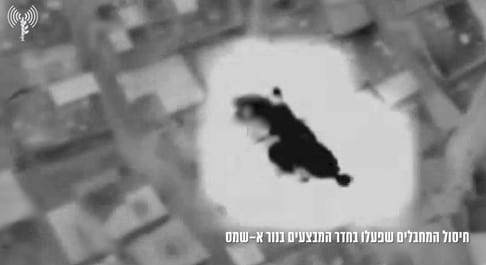
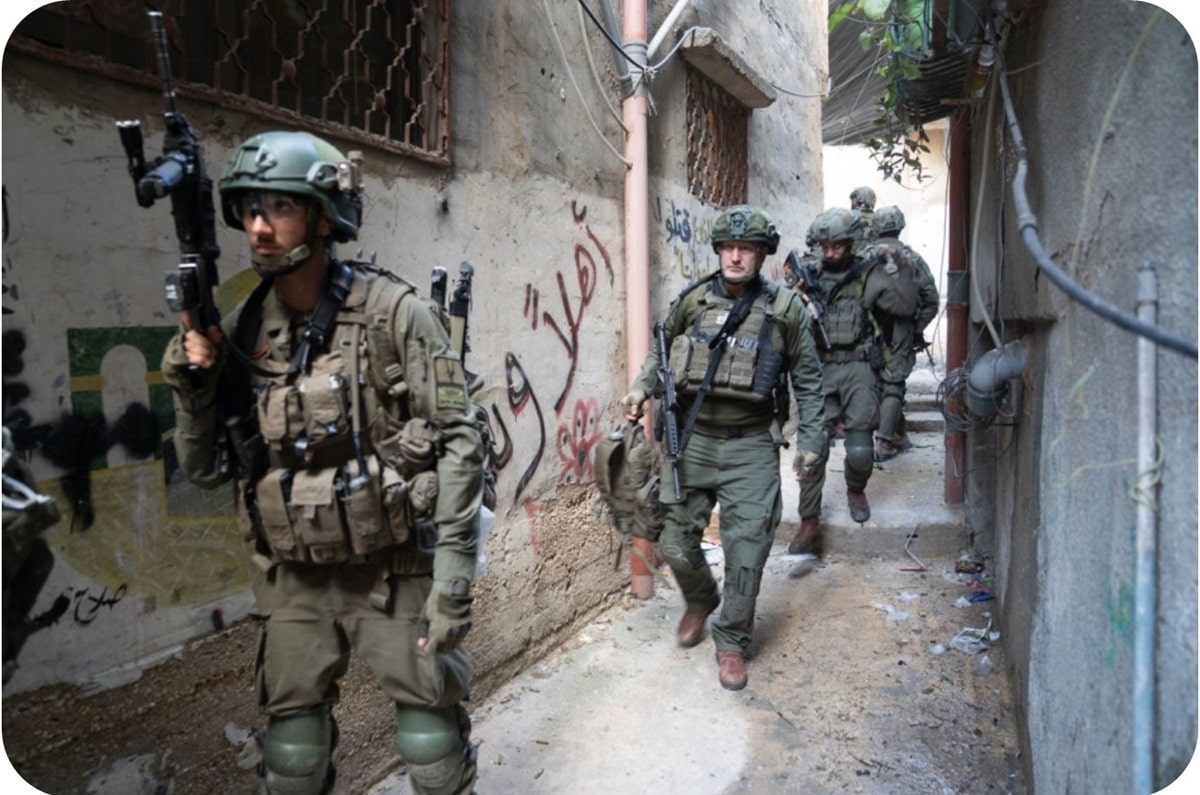

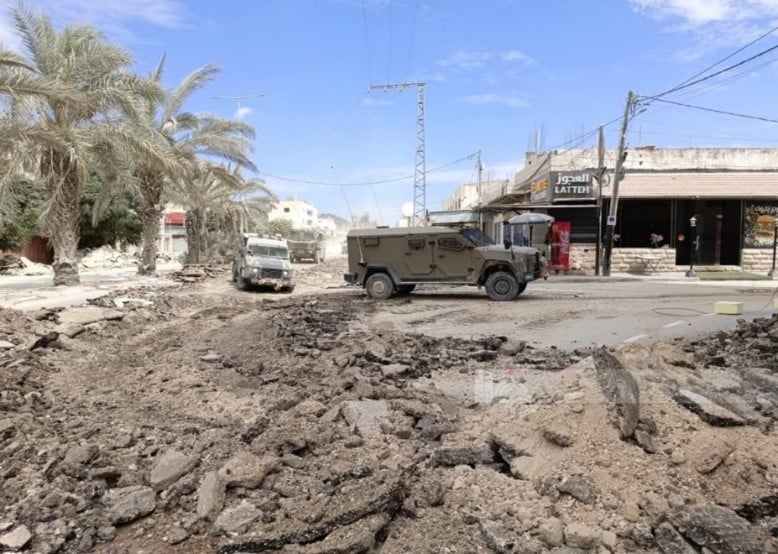
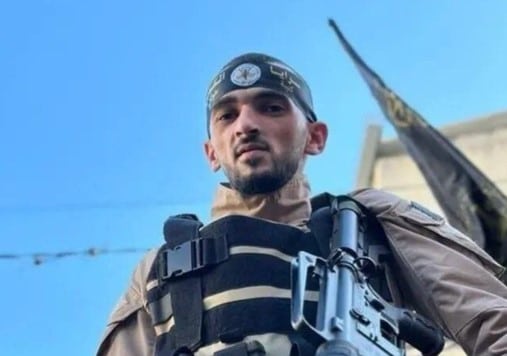
Bursts of gunfire toward Bat Hefer
The October 7 massacre was an inspiration for terrorists in Judea and Samaria. Tulkarm and the neighboring refugee camps, such as Nur Shams, have become hotbeds of terrorism, posing a significant threat to the Israeli communities in the Sharon region. The terror cells have effectively destabilized the security situation in this central area, as illustrated by the concerns of a Bat Hefer resident who reports hearing digging sounds beneath the community’s homes at night. From time to time, bursts of fire are directed at Bat Hefer from Tulkarm and from the Nur a-Shams refugee camp. The terrorist organizations in Judea and Samaria appear to be testing Israel’s responses, the way Hamas did before October 7. Hamas mounted the protests by Gazans at the border fence in order to examine Israel’s response and distract the attention of the security services.
Despite the frequent entry of security forces into Tulkarm to obstruct the terrorist activity brewing in the area, terrorists continue to trigger IEDs against them and 125 terrorists have been killed, with more than 300 arrested. IEDs and firearms are increasingly used in Judea and Samaria, and they are a challenge for the security services as well as a threat to the residents. Between January and July 2023, over 314 IED explosions and 120 gunfire attacks were reported. This number increased to 344 IED explosions and 124 gunfire attacks during the same period in 2024.
Additionally, terrorist organizations run a highly effective incitement machine that continually recruits active supporters for armed groups operating in the area. These groups pose a growing threat to Israelis in the Sharon region, whether originating from Tulkarm or Qalqilya.
After the 2002 Operation Guardian of the Walls, many arrests were carried out on a regular basis until 2007, when the agreement regarding wanted terrorists came into effect with the Palestinian Authority. That agreement brought a significant reduction in the number of arrests, and in the number of terror attacks. The IDF and the rest of the Israeli security services kept the flame of terrorism low in Judea and Samaria, but only for a while.
As an indication, in 2015 there were 2,575 arrests of terrorists in the Judea and Samaria area,[2] whereas in 2023 the number had reached 5,100. [3] Those figures include people wanted for major and minor crimes of terrorism as well as for conspiring with terrorist organizations. As of June 2024, seven months after the start of war, 4,150 terrorists had been arrested in the Judea and Samaria area, more than 530 had been eliminated, and more than 5,600 terror attacks had been committed, with 27 Israelis murdered. [4]
The Samaria “Envelope” (the Israeli communities located near the Samaria area)
The threat of terror against the Sharon region continues, with only dozens of meters separating the border fence at Tulkarm from the homes located in the eastern side of Bat Hefer. Other communities in the area also neighbor the fence. Those communities, such as Kfar Yona, have become the “Samaria Envelope.” The increase in incidents originating from the Palestinian cities in the Samaria area, and the repeated calls to attack the Jewish communities, require special precautions against an October 7–style incursion from the terrorist nests, and those precautions are being taken.
It is no secret that the terrorist organizations, led by Hamas and the PIJ, are taking root in the Samaria, operating together across localities and across organizational frameworks. The money entering from Iran serves to arm terrorist cells who are increasing in numbers and who shoot at the local Jewish communities and document their activities with body cameras (as did the October 7 terrorists with their Go Pro cameras). They flee the scene and upload videos of their activities to the social networks. In that way “The Al-Aqsa Martyrs Brigades – Youth of Revenge and Liberation” published a disturbing post on social media at the end of last May:
“Three of us from the elite unit of the Tulkarm Brigades penetrated into the Bat Hefer settlement masquerading as cleaners. The purpose of the operation was to eliminate one of the ISA police who live in the targeted house. The identification and tracking unit had followed him for 10 days and knew his times for entering and leaving the house. Our fighters penetrated successfully to the center of the house, but he was carrying a baby and there were two more children nearby. The fighters withdrew without attacking, in accordance with the teachings of true Islam as we know it. This is a message to Smotrich, who is threatening Tulkarm. He should first of all see how our fighters entered the man’s house unbeknownst to him.”
The Al-Aqsa Brigades ended the post with a threat:
“This is a warning to the enemy. If you treat Tulkarm as your leaders have announced, we will repeat the October 7 scenario in Bat Hefer, Avnei Hefetz, and other communities, and then we will see who blockades who.”
That post was one among many and highlights the objectives of the terrorists in Judea and Samaria. Their statements must be taken seriously. The situation becomes even more alarming if such a cell did manage to infiltrate a Jewish community—especially after the October 7 massacre and Israel’s subsequent realization of the dangerous misconceptions that had previously clouded its judgment.
Conversations with Bat Hefer residents reveal that they feel insecure with Tulkarm so nearby. In the past, the residents could assume that any noise of gunfire came from a wedding; but now, in wartime, the meaning is different. The gunfire may be aimed at their homes. One resident relates: “I’ve learned to differentiate between celebratory gunfire and firing intended as intimidation or aimed at our homes. Not long ago, our community had the feeling of a kibbutz, but now we’re frightened even to leave our homes after dark.” Another Bat Hefer resident says that the situation there is unpleasant and that despite being ostensibly protected from Tulkarm by the surrounding fence, they have long felt uneasy and fearful. The feeling is intensified by the noise of explosions, gunfire, and IEDs audible throughout Bat Hefer and the vicinity, and by the various social media flooded with videos of young Arabs shooting in Bat Hefer’s direction.
The Judea and Samaria area is definitely a powder keg and a significant battleground. The repeated attacks on border communities are reminiscent of the preparations for October 7 by Hamas and by the other Gazan terrorist organizations. The residents’ sense of security has been undermined significantly. The approach must change, and efforts must be focused on this seething district.
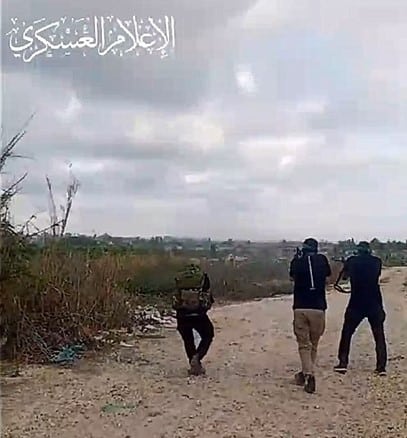
The link between Bat Hefer and Tehran
In mid-May 2024, at Tehran, a summit of Iranian terrorist proxies was attended by Isma’il Haniyeh, who headed the Hamas Political Bureau at the time; Hossein Salami, the commander of the Islamic Revolutionary Guard Corps; Isma’il Qaani, the commander of the Quds Force; and Naim Qassem, Deputy Secretary General of Hezbollah. There were also senior figures from the PIJ and representatives of the Houthis. At that summit, the Iranians and the representatives of their proxies concluded that escalation against Israel should mount further and pressure should force Israel to end the fighting in Gaza with no negotiations over a hostage deal. Incidents such as the gunfire targeting Bat Hefer, with Hamas-affiliated terror cells of Tulkarm attacking in order to strain Israel’s defenses, are part of that effort.
The terrorist strongholds in the Samaria have effectively become an ‘Iranian outpost,’ with various cells comprised of operatives from different terrorist organizations, notably the PIJ and Hamas, which are both Iranian proxies. The cooperation among various terrorist cells is already well known in Judea and Samaria. This is how the Lions’ Den organization in Nablus operates, for example, being composed of young Palestinians identified for the most part with Hamas and the PIJ, but also with the Al-Aqsa Martyrs Brigades. This terrorist activity, linking Palestinian and Iranian interests, broadens the line of fire that threatens the Sharon communities.
The Iranians, like other players in the Mideast, considered the October 7 attack an achievement marking the beginning of the end for the Jewish State. The events of the massacre only encouraged Hamas and the rest of the “Axis of Resistance” to plan for another October 7–style attack. Next time, the terrorists believe, the attack will be launched from the Judea and Samaria area in order to hit at Israel’s soft underbelly. Hamas may be convinced, although as yet no specific information says it is, that it can bisect Israel at the narrowest point — between Tulkarm and Netanya.
That idea could be part of Iran’s plan to “unify the fronts.” Hamas was to participate in the plan under the guidance of Saleh al-Arouri, head of the Hamas military wing in Judea and Samaria. He was eliminated in Beirut last January and replaced by Zaher al-Jabarin, who hinted last May that “the Hamas movement holds many cards that it has not yet played…”
He added that “the West Bank will surprise the enemy soon, and we will see new chapters of creative Palestinian fighting.” In further remarks, Al-Jabarin hinted that the October 7 massacre would repeat itself out of the Judea and Samaria area.
“The resistance is continuing until the end of the Occupation and the liberation of Palestine. October 7 was a noble chapter among others. The Resistance will show creativity with the tools and the means at its disposal, and will humiliate the enemy in a place removed from the enemy’s expectations and calculations.”
Cells of youths inspired by October 7
The new terrorist cells comprise chiefly young terrorists from Tulkarm, the Nur a-Shams refugee camp, Qalqilya, and Tubas. Those terrorists were cradled in ubiquitous incitement from the Palestinian Authority, Hamas, the PIJ, and the Al-Aqsa Martyrs Brigades in Judea and Samaria. Their militias see the October 7 massacre as inspiration for further attacks.
Thus, for example “the Al-Aqsa Martyrs Brigades – Youth of Revenge and Liberation” was formed. It is split into terrorist nests around the Samaria region — in Tulkarm, Tubas, and elsewhere. During last June, the Al-Aqsa Martyrs Brigades – Youth of Revenge and Liberation cooperated with the new Fatah terror group “Knights of the Night” to publish videos and take credit for the gunfire targeting Bat Hefer in the Sharon, the Einav roadblock in the Samaria, and an IDF post near the Shuweika gate in the Tulkarm district.
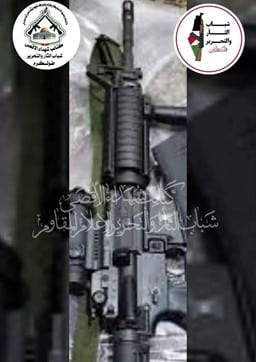
The threat from the refugee camps
Despite the IDF’s wide-ranging preventive activity in recent months, including the arrest of thousands of terrorists, the confiscation of much inciteful material, and the elimination of senior wanted operatives and commanders, the deterrence resulting from the enormous IDF achievements was short-lived. In refugee camps such as Nur a-Shamsand in Tulkarm, nests of terrorism have significantly continued to organize in recent months. As mentioned, these refugee camps are very close to major cities of the Sharon and they could endanger Israeli citizens.
Since the war commenced, great effort has been invested in thwarting terrorism in the area of Tulkarm and the Nur a-Shams refugee camp, the primary objective being, as mentioned, to neutralize terror infrastructures such as various war materiel and explosives workshops, and to clear roadways in order to provide the security services with freedom of movement.
- On June 30, following intelligence gathering and an IDF operation, the terrorists involved in the June 23 attack on Amnon Mukhtar in Qalqilya were eliminated. The commander of the Hamas military wing in Tulkarm was eliminated after an operation of the security services.
- On August 22, IDF forces conducted an operation in the Tulkarm district to counter terrorism. They targeted and destroyed various assets, including weapons and IED workshops, and eliminated several terrorists. The operation lasted roughly 14 hours. Among the objectives was clearing the roadways of IED’s in order to provide the security services with freedom of movement there.[5] Those are only some examples of the IDF’s extensive counter-terrorist activity across the Green Line.
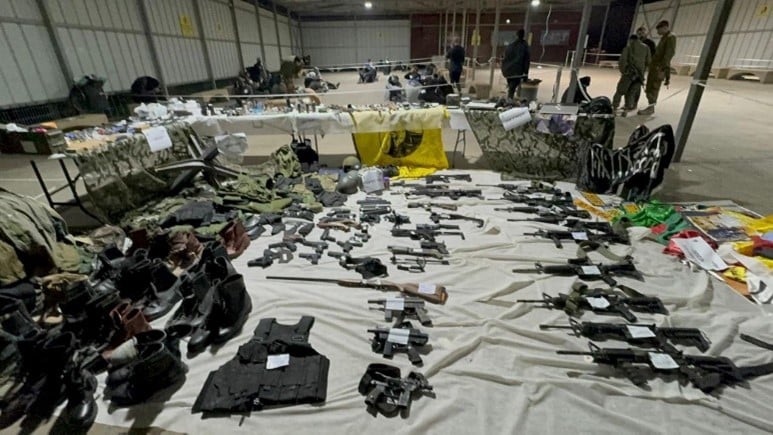
With the passage of time and the continuation of incitement, the terrorist brigades at the camps managed to renew their military strength and recruit new terrorists to their ranks. Any boy of 15 or older could be a terrorist endangering our troops.
Despite powerful operational activity against the “hornets’ nest” that had developed in Tulkarm, the terrorists in the field are successfully upgrading their methods of operation. One reserve commander in military engineering for the Judea and Samaria Division relates:
“From week to week, no matter how many operations and arrests are carried out, we face improvements — including an upgrade in the explosive devices, which are much more sophisticated and heavier. Their methods are becoming more sophisticated as well.”
In June, two terror attacks against IDF soldiers took place during operational activity of the security services. According to investigators, a D-9 failed, atypically, to detect an IED with a charge of dozens of kilograms; and the detonation of the IED killed a soldier and seriously injured his squad’s commander. In a similar incident during an operation in Jenin a week earlier, another officer was killed by a buried IED. Besides those two incidents, an IED exploded near the fence separating the community of Bat Hefer from the city of Tulkarm. That explosion was intended to attract IDF soldiers.
Demonstrating how deep the problem of terrorism runs in the area, some of the armed terrorist organizations include smaller local cells, which may number only a few terrorists or may amount to significant terrorist leagues, as in northern Samaria where dozens or hundreds of armed terrorists operate under a single brigade. Those terrorist cells are replete with materiel as weaponry is channeled into the area, and Iranian elements provide a large amount of knowhow as well. The terrorist infrastructures join with unarmed terrorist crowds that concentrate on rioting and on attempting to lynch Jewish residents.
Most of the war material is apparently smuggled from Jordan under Iranian guidance. Because of inadequate border security, weapons make their way into the Judea and Samaria area. Jordan, for its part, has begun reducing its supervisory activity at the border, so that weapons are now routinely smuggled. Thus, large quantities of weaponry and stores of explosives are now present in the Palestinian Authority’s territory.
Between January and April of 2022, the police successfully thwarted 9 cross-border shipments of weaponry from Jordan and Lebanon, confiscating 171 weapons. [6] In November 2023 the then-largest attempt at smuggling weaponry was thwarted. Four suspects were arrested and 137 weapons were confiscated along with 250 magazines, valued in total at 6 million shekels. [7] Last June, a shipment of 20 handguns was thwarted. They had been concealed in a vehicle at the Rabin Crossing.[8] And at the start of last July, fighters from the Judea and Samaria Border Police and IDF forces foiled the smuggling of weapons after observers in the area identified three bags containing more than 75 handguns. The Iranians’ objective is to flood the Palestinians with weapons in order to bring about terror attacks. At the start of April, the IDF Spokesperson announced that smuggling of advanced weapons into the Judea and Samaria area, for use against various Israeli targets, had been thwarted. According to Israeli security sources, the infrastructure for the new terrorist cells in northern Samaria was established with the help of Sheikh Bassam Sa’di from the city of Jenin. Saadi,[9] a senior figure in Islamic Jihad, was sentenced to only 22 months’ imprisonment.
Toward the end of December 2023, still close to the beginning of the war in the Gaza Strip, the security services arrested some 33 wanted operatives, confiscated dozens of weapons, and destroyed an explosives workshop that had contained dozens of IEDs ready for use against Israeli targets. Some months later, on June 5, 2024, came the arrest of Ammar Nassallah, a resident of the Nur a-Shams refugee camp, for involvement in the late May shooting attacks against Bat Hefer. When interrogated, he confessed that he belonged to a larger cell that intended to continue attacking the communities near the border in general and Bat Hefer in particular.[10] Those are merely two reports to demonstrate the situation in the field and to show that despite all the efforts invested by the IDF forces, there is no significant sign that the trend on the ground is reversing.
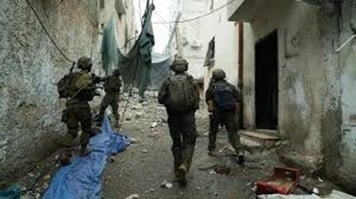
Courses of action – How to prevent “the October 7 of the Sharon”
The current situation in Judea and Samaria, where terrorist organizations are forming armed militias to confront Israel and create another active front near the communities of Judea and Samaria, as well as the cities of Greater Tel Aviv, the Sharon, and the Judean Foothills, is unacceptable. Therefore, the threat posed by the terrorist nests in the cities and refugee camps of Judea and Samaria must be rooted out and destroyed, and the territory must be purged of the various weapons and war material.
- First, Israel must dismantle the militias and sever their military coordination with all terrorist elements, especially in northern Samaria.
- In addition, Israel must change its attitude and abandon the prevailing misconception that in this district there is a difference between Hamas and the PIJ on the one hand, and those identified with Fatah, such as the Al-Aqsa Martyrs Brigades, on the other hand.
- Israel must also exact a price from the Palestinian Authority and declare it responsible for every incident of terror originating in Judea and Samaria.
- Moreover, prevention and foiling of terrorism must be intensified and planning must begin for an extensive military operation in order to paralyze the terrorist infrastructures that are developing in the district.
- Additional forces must be deployed at the Jordanian border in order to restore order, stabilize the area of our presence along the border, and prevent the entry of weapons and other war material. In other words, cut off the oxygen. At the same time, Israel must demand that Jordan also intensify its activity along the border in order to halt smuggling.
- Alongside those activities, Israel must exact a price from civilians to turn involvement in terrorism into a losing game. Anyone protecting or aiding a terrorist, or a terrorist operation, must also be punished harshly.
- The principle is to maintain freedom of action in the Judea and Samaria area as an indispensable means of blocking terrorism and preserving Israeli security.
Many people contend that while we are still fighting in Gaza, Israel must not join battle elsewhere and be dragged into a multi-front war. But Israel is already engaged in a multi-front war. Without a comprehensive military strategy in Judea and Samaria, terrorism will persist, impacting the residents of Judea and Samaria, the Sharon, and the entire country.
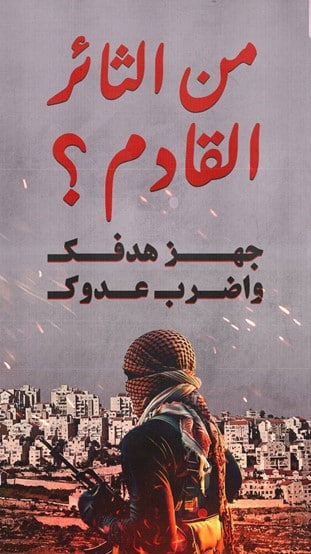
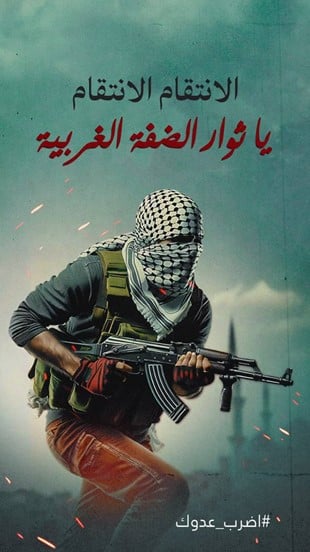
Appendix A: Comprehensive Data on Terrorism Originating from Tulkarm
Tulkarm: Emerging capital of terrorism?
How a District that Was Previously of Secondary Importance in Terms of Terrorism in Judea and Samaria is Heating Up and Challenging the Security System
Data from the 10 first months of the War of Iron Swords (Oct 7, 2023 – Aug 7, 2024)
** Data from the Tulkarm district, the refugee camps, and Nur a-Shams
| Category | Judea and Samaria | Tulkarm |
| Fatalities among the security services | 11[xi]
Police: 4 IDF: 7
|
2[xii]
2/7 – Maxim Rizkov – IED Chief Inspector Yitav Lev Halevi – in battle 1/7 – Sgt. Maj. Yehuda Gato – IED |
| Civilians murdered | 7[xiii] | 1 – Amnon Mukhtar was murdered by a terrorist from Tulkarm[xiv]
* 2 of them in Qalqilya |
| Terror attacks | 6,392[xv] | – 21 cases of firing toward Bat Hefer
– 51 documented cases of firing toward the roadblocks at Nitzanei Oz – 75 cases of firing at IDF forces in Tulkarm – 33 cases of firing inside Nur a-Shams at security personnel[xvi]
|
| Terrorists eliminated as of August 7 | 600[xvii] | 125[xviii] |
| Arrests as of August 7 | 4,150[xix] | 314[xx] |
[1] Information received from the security services
[2] ISA annual report for 2015, https://www.shabak.gov.il/media/daofn2ys/סיכום-שנתי-2015.pdf
[3] ISA annual report for 2023, https://www.shabak.gov.il/media/zpledoyg/דוח-חיצוני-סיכום-שנה-2023.pdf
[4] IDSF Research Department, Israel War Database, warinisrael.org.
[5] https://www.kikar.co.il/security-news/simnbk
[6] IDSF Research Department, Strategic Assessment for Israel, The Coordinated Assault on Zionism, June 2022, https://idsf.org.il/wp-content/uploads/2022/10/הערכה-אסטרטגית-לישראל-תקציר-מנהלים.pdf
[7] https://www.globes.co.il/news/article.aspx?did=1001463894
[8] https://www.kikar.co.il/news/sfc3c1
[9] The IDF website, https://www.idf.il/כתבות-ועדכונים/2023/פברואר/נגזר-דין-באסם-א-בעדי-פעל-לביסוס-פעילות-התאחדות-בלתי-מותרת
[10] https://www.kan.org.il/content/kan-news/defense/765965/
[xi] The IDSF Israel War Database, warinisrael.org; the IDF Spokesperson’s Office
[xii] The IDSF Israel War Database, warinisrael.org; the IDF Spokesperson’s Office
[xiii] The IDSF Israel War Database, warinisrael.org; the IDF Spokesperson’s Office
[xiv] https://www.kan.org.il/content/kan-news/defense/767811/
[xv] The IDSF Israel War Database, warinisrael.org; the IDF Spokesperson’s Office
[xvi] https://www.fdd.org/analysis/2022/12/14/mapping-west-bank-insurgency/
[xvii] Estimate from security sources. On 4 July 2024 the estimate stood at 500 terrorists. Now14 News, https://www.now14.co.il/מלחמה-ביוש-למעלה-מ-500-מחבלים-חוסלו-70-מהם-מ/
[xviii] Data obtained from the ISA
[xix] The IDSF Israel War Database, warinisrael.org; the IDF Spokesperson’s Office
[xx] Data obtained from the ISA
